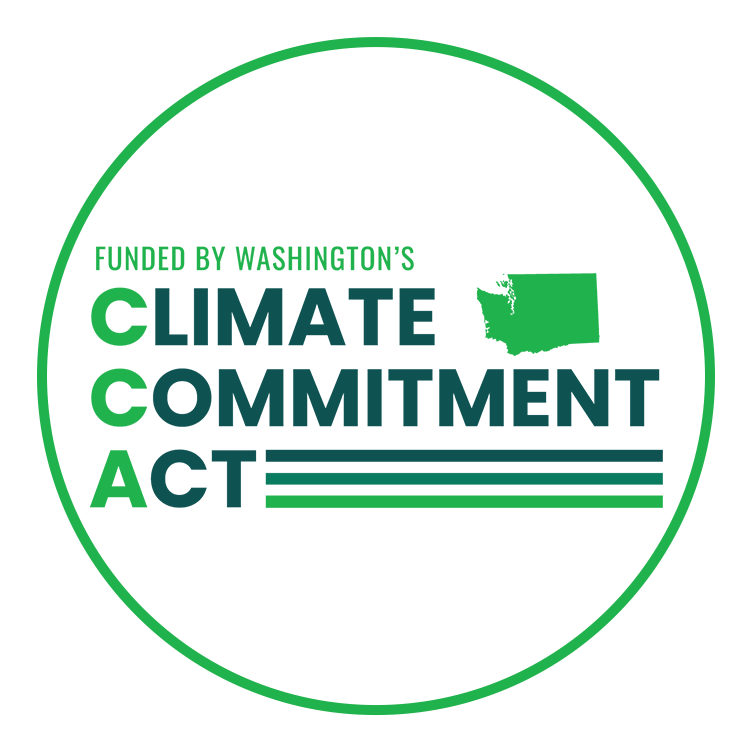Agriculture: The cornerstone of Washington’s economy
![]() Download a PDF of this policy note with sources and citations here.
Download a PDF of this policy note with sources and citations here.
Key Findings
- Agriculture accounts for $51 billion – or 13 percent - of Washington’s yearly economic activity
- 160,000 Washington jobs are tied to agriculture – more than Microsoft and Boeing combined
- Washington state produces more than 300 different crops – second only to California
- The number of wineries in Washington state has tripled over the past decade
- State leaders must ensure agricultural productivity is a priority and considered equally with other key industries when setting tax, regulatory and economic policy
- In 2014, the state exported $16 billion worth of food and agricultural products to people around the world
Introduction
Washington state is blessed with four key ingredients that make it an agricultural production powerhouse: a diverse climate, rich soil, abundant water and hard-working people.
Throughout our state’s history, agriculture has remained a key component of the state’s economic success. In fact, agriculture adds $51 billion a year to the state’s GDP and the agricultural sector makes up more than 13 percent of our state’s economy.
Washington state ranks 14th nationally in overall commodity production and is in the top five in the nation in many categories including apples (1st), hops (1st), potatoes (2nd), lentils (3rd), and wheat (4th).
Background
Washington’s agricultural landscape is as diverse as its topography. In fact, more than 300 different crops are grown in the state – a diversity of production second only to California.
More than 39,000 farms are located in Washington, some in the fertile valleys of Snohomish County, some in the drier areas of Eastern Washington. The counties that play the biggest role in the state’s agricultural economy are Grant and Yakima, which are home to 4,700 farms and a $3.41 billion yearly economic output collectively.
That economic output is a two-step process that starts with growing and concludes with processing and distribution around the world through our state’s ports. Each region of our state, east and west, works in concert to make the agriculture economy thrive.
Crops & farming
 Washington state leads the country in apple production, with a yearly value that can exceed $2 billion (2013). No other state comes close to Washington’s apple yield, which comprises more than 66 percent of total U.S. production. The other states among the top five – New York, Michigan, Pennsylvania and California – all lag well behind Washington.
Washington state leads the country in apple production, with a yearly value that can exceed $2 billion (2013). No other state comes close to Washington’s apple yield, which comprises more than 66 percent of total U.S. production. The other states among the top five – New York, Michigan, Pennsylvania and California – all lag well behind Washington.
In fact, if the number of apples picked in Washington last year were placed side-by-side they would circle the earth 29 times. And every apple is hand-picked.
While Idaho is known for famous potatoes, Washington is also a top producer. Nearly 20 percent of total U.S. production comes from the Evergreen state, compared to 24 percent from Idaho.
 Among all agricultural commodities, the red raspberry market is where Washington state produces the largest share – more than 90 percent of the nation’s production.
Among all agricultural commodities, the red raspberry market is where Washington state produces the largest share – more than 90 percent of the nation’s production.
While most of the state’s crops are grown in sun-drenched Eastern Washington, dairy farms are scattered across more than two dozen counties, particularly in Yakima, but also in Western Washington. The output of Washington’s dairies is impressive: the state ranks 10th in total U.S. milk production and 4th highest in milk production per cow.
Food processing
Though Washington state is known for advanced technology and airplane production, the number of people working in both the growing and food processing industries surpasses 160,000 – more than Microsoft and Boeing employment combined.
There are more than 200 food processing companies in the state. Food processing companies benefit from two key ingredients in Washington – water, and inexpensive, renewable hydroelectric power.
In terms of total employment, fruit and vegetable processors are by far the largest food processors in the state, followed by seafood processors. In total, more than 34,000 people work in nearly 1,000 food processing facilities around Washington.
Wine production
Washington’s wine production has grown rapidly over the past decade, becoming an essential part of the state’s agriculture economy. In 2013, nearly five billion dollars of economic benefit was produced directly by the state’s wine industry. Nearly 30,000 jobs in the state – or one-percent of the state’s total employment – are based on the wine industry, The state is now home to more than 850 wineries and wine grape growing areas now exceed 50,000 acres. The state ranks second only to California in total wine grape production.
Unlike other parts of the agricultural economy, the wine industry has the added advantage of promoting tourism across the state. In fact, wine-related tourism spending in Washington surpasses one billion dollars a year and supports more than 3,000 jobs.
Exports
Without the ability to export, Washington’s agricultural production would be severely limited. In 2014, the state exported more than $16 billion worth of food and agricultural products to people around the world, half of which were grown or raised in Washington. This included fresh fruit, vegetables, meat, wheat, seafood and dairy.
Most of Washington’s food exports are shipped to Asia. The top five markets for Washington agriculture exports are;
- Japan
- Canada
- China/Hong Kong
- Philippines
- South Korea
The ports of Seattle and Tacoma together are the third largest container gateway in North America, demonstrating the importance of Interstate 90 and Snoqualmie Pass for transporting products from Eastern Washington.
In addition to the highways, farmers in the east are also able to move their products by barge through the Columbia-Snake River system.
The ability to move products at all came to a halt entirely in 2014 and 2015 because of the West Coast port shutdown, resulting in millions of dollars in lost revenue for state growers. Fresh fruit and vegetables rotted at the 29 ports along the west coast during the strike. Washington state apple growers alone estimated they lost nearly $100 million. Other Washington farmers and growers were hurt as well, as their products became worthless while awaiting shipment.
The port slowdown lasted for months without action by the state or federal government to intervene, as they had done in previous port disputes. The lack of action caused even more financial losses for Washington’s farm families and businesses.
According to an analysis completed for the Washington Council on International Trade, in-state businesses lost an estimated $769.5 million during the port shutdown. The analysis did not take into account the global market share lost by growers, which may take years to recover.
After the dispute was resolved, Washington Congressman Dan Newhouse introduced legislation called the ECONOMICS Act (H.R.3932). The bill, co-sponsored by Oregon Democrat Kurt Schrader, seeks to adopt “triggers” for when the government would begin the process of seeking to resolve a future port dispute. The criteria listed in the bill include:
- When the number of affected ports involved exceeds four
- When the number of employees involved exceeds 6,000
- When the fall in export or import vessel value exceeds 20 percent
Currently, only the President of the United States has the authority to seek an injunction to end a port labor dispute.
Policies that limit farm production
Like any industry, the action taken by lawmakers at the local, state or national level can have tremendous effect on people working in the agricultural sector.
In addition to economic output, farm families in our state contribute enormously in yearly property tax revenues to their local communities and to the state. Property taxes paid by farmers and agricultural businesses exceed $230 million per year.
While farmers prefer to spend time in their fields, or tending to their livestock, their time is often tied up with bureaucratic red tape or legal action brought by activists located hundreds of miles away.
At the State Capitol, family farms and the broader agricultural community often come under intense political pressure from lawmakers, lobbyists and legislation that seek to regulate everything from the amount of time they spend working in the fields to the waste their animals produce.
Occasionally, a bill is introduced to help family farms, like House Bill 2840 in the current legislative session. The bi-partisan legislation would put the regulations and enforcement for water quality associated with concentrated animal feeding operations in the jurisdiction of the state Department of Ecology and state Department of Agriculture.
The law specifically directs the agencies to write rules that are clearly based on state laws. Environmental groups oppose this policy approach because the bill would limit their ability to sue farmers in court and put family dairies out of business.
In fact, in a recent newspaper article, a Sierra Club lobbyist complained that having the Department of Agriculture involved was a problem because their mission was to “promote Agriculture.” In 2016, the bill failed to make it out of committee and is likely dead for the year.
Other legislative bills over the years that would have hurt the agricultural sector include:
House Bill 2038 (2013 legislative session):
To increase taxes on agricultural community by nearly $1 billion
House Bill 2201 (2014 legislative session):
To impose a new reporting system for farmers and other businesses who benefited from tax exemptions and preferences.
House Bill 2484 (2016 legislative session):
To require the Dept. of Labor and Industries to impose new training, safety rules on dairy farms
In addition, Governor Jay Inslee has proposed capping and reducing greenhouse gas emissions from refineries and manufacturers. The regulations would hit fertilizer makers and food processing facilities in Eastern Washington, raising costs and reducing job opportunities with little or no environmental benefit.
Under the rule, companies that exceed an arbitrary carbon level set by state regulators would have to pay a fine of up to $10,000 a day. If business owners did not want to comply with the fine, they would be required to pay for carbon reduction projects elsewhere.
Under the proposed regulation, the Department of Ecology would allow companies that suspend operations in Washington to sell credit for carbon reductions beyond the targets set in the regulation. Essentially, the state would be punishing companies for keeping jobs in the state, and paying them for sending jobs elsewhere.
Conclusion
In 2009, the Washington State Department of Agriculture sought responses from more than 2,000 people in the agricultural community about ways to keep Washington farming vibrant and profitable for generations to come.
The feedback compiled in the “Future in Farming” project was consistent across the state. Respondents said lawmakers should make agriculture a priority, eliminate regulatory barriers, protect resources, strengthen support services and harness emerging opportunities.
Whether policymakers are following these recommendations is a source of great debate in Olympia and across Washington’s farming communities. Placing additional regulatory burdens on the state’s farm families certainly does not eliminate regulatory barriers. Based on their actions, it is unclear whether state policymakers have truly made Washington agriculture a top priority, as the report recommends.
Washington’s farm families and food processors do much more than provide a huge economic benefit to the state. They provide us with food security. Farmers and those who work in the agricultural community in our state are also the stewards of public lands and of public resources.
With a yearly economic contribution valued at $51 billion and 160,000 jobs, Washington farmers and agricultural businesses make up an essential and often overlooked segment of the state economy.
For that reason, state leaders should ensure that agricultural productivity is a priority and considered equally with high-tech, software, aerospace, biomedical research and other key industries when setting tax, regulatory and economic policy in Washington.





